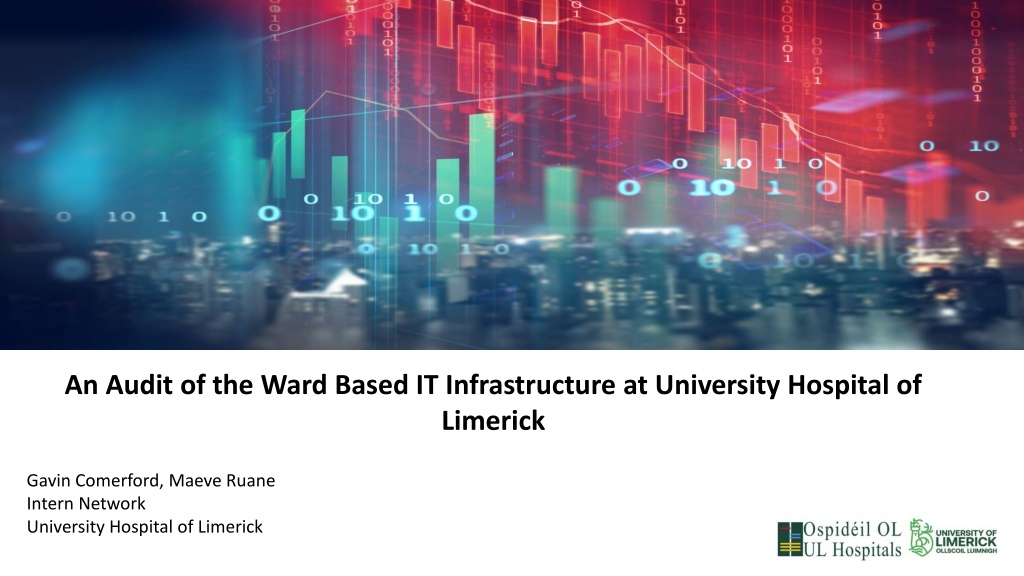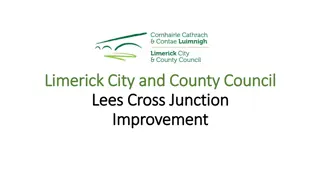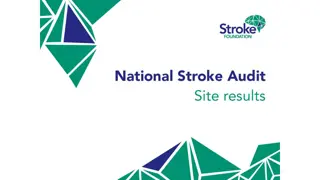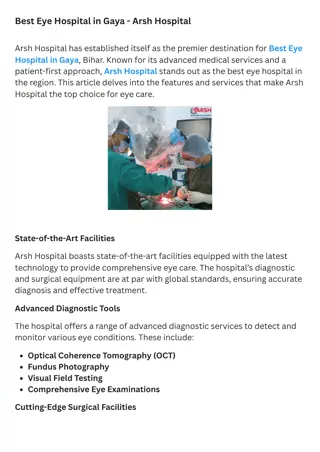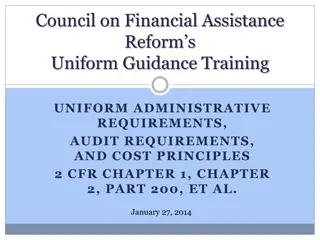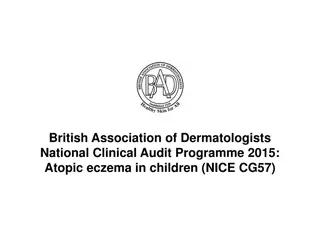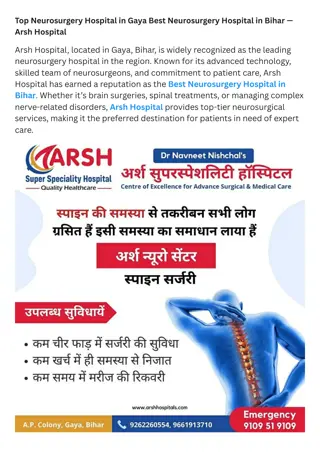Audit of Ward-based IT Infrastructure at University Hospital of Limerick
In response to a cyber-attack on the HSE in 2021, an audit was conducted at University Hospital of Limerick to assess the accessibility of key healthcare-related computer programs. The audit revealed issues such as JavaScript errors, missing plug-ins, outdated software, and internet access issues. Interventions were implemented to address these issues, resulting in improvements in program accessibility during a re-audit. Plans are in place to sustain these improvements with a future audit scheduled for June 2022.
Download Presentation

Please find below an Image/Link to download the presentation.
The content on the website is provided AS IS for your information and personal use only. It may not be sold, licensed, or shared on other websites without obtaining consent from the author. Download presentation by click this link. If you encounter any issues during the download, it is possible that the publisher has removed the file from their server.
E N D
Presentation Transcript
An Audit of the Ward Based IT Infrastructure at University Hospital of Limerick Gavin Comerford, Maeve Ruane Intern Network University Hospital of Limerick
Background: In 2021 the HSE was subjected to a cyber-attack which affected every hospital in the country. The abrupt cessation of access to IT systems highlighted their key roles in the everyday lives of medical professionals. By the 21st of September 2021 100% of servers were consider decrypted and 99% of applications restored. Despite this, many of the computers on the wards of UHL continued to have a variety of issues, such as lack of access to vital programmes making it impossible to complete tasks which are fundamental to providing high quality, safe and efficient patient care. Methods: 91 computers were investigated to understand which healthcare-related programs were available and functioning on 19 wards of the hospital. The programs which were assessed included Nimis RIS, Nimis Pacs, iLabs, Electronic Patient Management System and Edischarge. Aim: The purpose of this audit was to measure the accessibility of various computer programs in University Hospital of Limerick, with the hope that highlighting any issues discovered could aid their resolution. 14th May 2021 HSE is subjected to a Cyberattack using Conti Ransomware 21st January 2022 Re-audit performed on 91 computers in UHL 23rd October 2021 First Audit of 91 computers carried out in UHL Any errors which were displayed on accessing these programs were recorded to identify the source of the issues. Furthermore the number of wards with Pacs high resolution computers available to NCHDs was assessed. 21st January 2022 Re-audit performed on 91 computers in UHL 3 months following the first audit, the audit cycle was continued by repeating the survey of the 91 computers 26th November 2021 Medical Directorate meeting. IT Department informed of audit findings 21st September 2021 100% servers are considered decrypted with ~99% of applications restored1 1.PwC Independent Post Incident Review 2021
Interventions: Following the initial audit, the results were presented to the Medical Directorate and Head of the IT department. This allowed discussion on what issues could be solved at a regional vs national level. The data collected throughout the audit was shared with the IT department. A plan was then developed to improve the ward based IT infrastructure. The most common issues identified Javascript Errors Missing MRM plug-ins Outdated Internet Explorer Internet Access Issues Software Compatibility Issues First vs Second Cycle Results 100% 80% 60% Accessible Initial Audit 40% Accessible Re- Audit 20% 0% Nimis Ris Nimis Ris (Images) Nimis Pacs iLab DART Edischarge EPMS iHub Results of First Cycle: 86% could access Nimis Ris but only 22% were able to open images Only 21% could access Nimis Pacs 88% of computers could access iLabs but only 16% of these could view cytology and histology reports through DART 90% had access to Edischarge Only 19% of computers had access to EPMS Of the 19 wards only 6 had access to Pacs high resolution monitors. Results of Second Cycle: 5% increase in the number of computers that could access images on Nimis Ris 4% increase in computers with Nimis Ris available 2% increase in accessibility to Nimis Pacs, iLABs, DART and Edischarge 1% increase in access to EPMS. No changes in the number of Pacs monitors available on wards.
Sustaining Improvements: It is the intention of the authors to repeat the survey of the ward based IT infrastructure for a third time in June 2022 to assess whether plans which were put in place continue to be implemented. June 2022 21st January 2022 Re-audit performed on 91 computers in UHL 14th May 2021 HSE is subjected to a Cyberattack using Conti Ransomware Repeat the audit on 91 computers to assess for further improvement 23rd October 2021 First Audit of 91 computers carried out in UHL End Goal: Improve IT infrastructure to enable NCHDs to improve quality of patient care. 26th November 2021 Medical Directorate meeting. IT Department informed of audit findings 21st September 2021 100% servers are considered decrypted with ~99% of applications restored1 Conclusion: Health care related software programs allowing access to patient laboratory results and imaging are essential to providing high quality and safe patient management. In addition, the inability to access all programs required to provide patient care on each ward, leads to unnecessary time wasting of NCHDs, as they must move from ward to ward to find computers with these programs. This quality improvement assessment aided in making small improvements to the IT infrastructure of UHL and highlighted the need to update and improve it.
